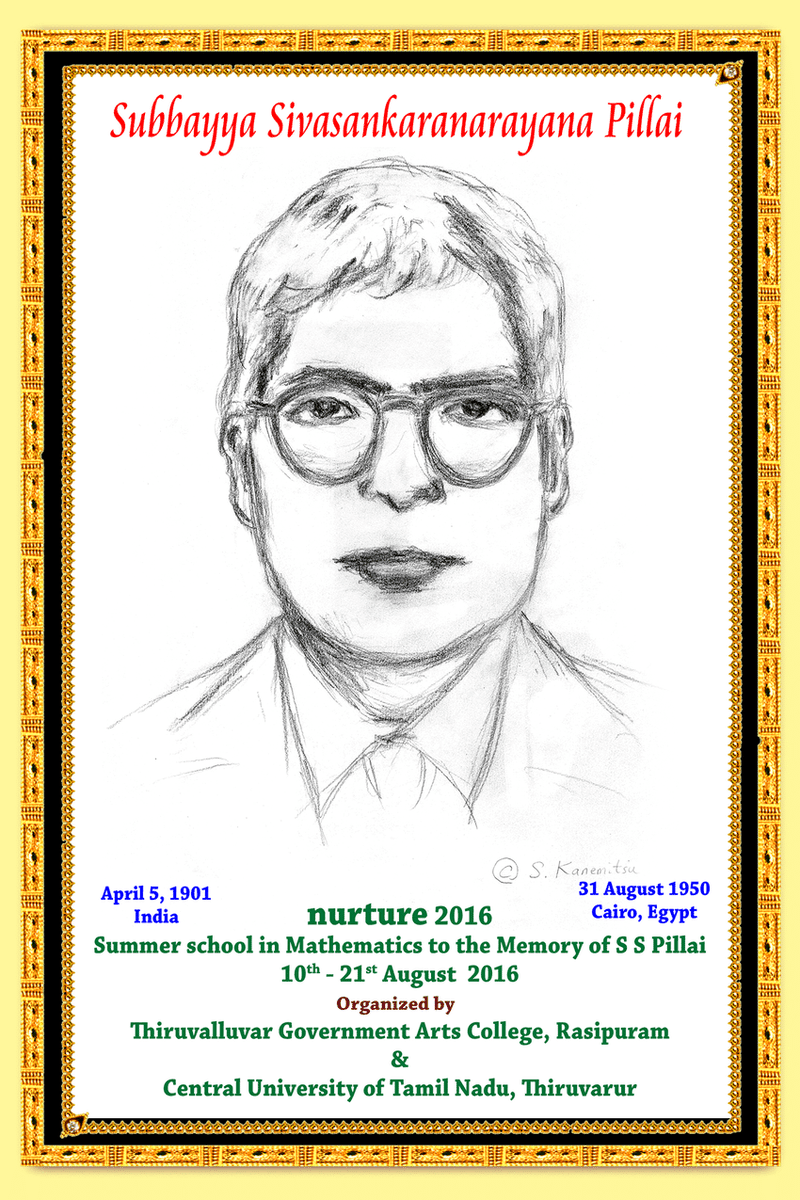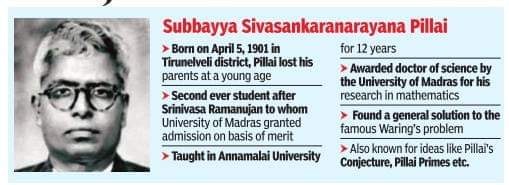A great Indian Mathematician:
S S Pillai another Ramanujan, but just not well known.
Srinivasa Ramanujan’s story is now part of the folklore of mathematics. But there was another number theorist who could have followed in Ramanujan’s footsteps but remains relatively unsung.
S S Pillai another Ramanujan, but just not well known.
Srinivasa Ramanujan’s story is now part of the folklore of mathematics. But there was another number theorist who could have followed in Ramanujan’s footsteps but remains relatively unsung.
Born in 1901 to a poor couple in Vallam, a small village off Sengottai in Tirunelveli district, Subbayya Sivasankaranarayana Pillai lost his parents at a young age. Although his primary school teacher Sastriar took care of his schooling after his parents’ demise
2.
2.
and a few well-wishers funded his college expenses, for Pillai, the real roadblock came when he was denied admission into the University of Madras to pursue an MA in Mathematics. The university granted admission only to those who secured the first division
at the undergraduate level and Pillai stood no chance with the second division in BA. But this time around help came from Chinna Thambi, the then principal of Pachaiyappa’s College and a member of the university’s senate. Thambi reasoned with senate members by citing the case of
Srinivasa Ramanujan, who was admitted to the university on the virtue of his merit, as a research scholar in the mathematics department, even though he had not completed his school education. The Senate voted in favor of Pillai in 1927. After completing his master’s degree,
Pillai joined Annamalai University as a mathematics lecturer in 1929, where he worked for 12 years. It was during this period that he produced phenomenal papers. His research was later recognized by the University of Madras and
Pillai was awarded a DSc (Doctor of Science). The mathematician will always be remembered, especially by number theorists, for solving the Waring’s Problem, proposed by English mathematician Edward Waring in 1770 and considered a major challenge for
professional mathematicians of the late 18th, the 19th, and early 20th centuries. For his achievements, Pillai was invited in August 1950 to work for a year alongside Albert Einstein and other distinguished scientists at the Institute of Advanced Studies, Princeton.
But before taking this assignment he was invited as a plenary speaker to the International Congress of Mathematicians (ICM) at Harvard University in August-September 1950. While en route to Rome, which was a stopover to New York,
Pillai’s plane caught fire and crashed near the village of Ityai El Barud in the Egyptian desert on August 31. All 55 passengers on board were killed. Pillai was only 49 when he died.
But he left back 76 excellent research articles in mathematics, which were compiled into the book “Collected works of Sivasankaranarayana Pillai” by R Balasubramanian and R Thangadurai and published by Ramanujan Mathematical Society in 2009.
The book has inspired many generations of mathematicians. It is quite remarkable to see the resemblance in the lives of Ramanujan and Pillai. Poverty, love for mathematics, and achievement through perseverance seem to be the common threads.
One wonders what would have happened if both these geniuses had lived a little longer? While Ramanujan was fortunate to have the support of number theorist G H Hardy, who ensured that his ward’s name got etched permanently in the annals of mathematics history,
Pillai wasn’t as fortunate. Today, Pillai’s outstanding work is recognized only within the mathematical fraternity, not in the wider society.

 Read on Twitter
Read on Twitter



